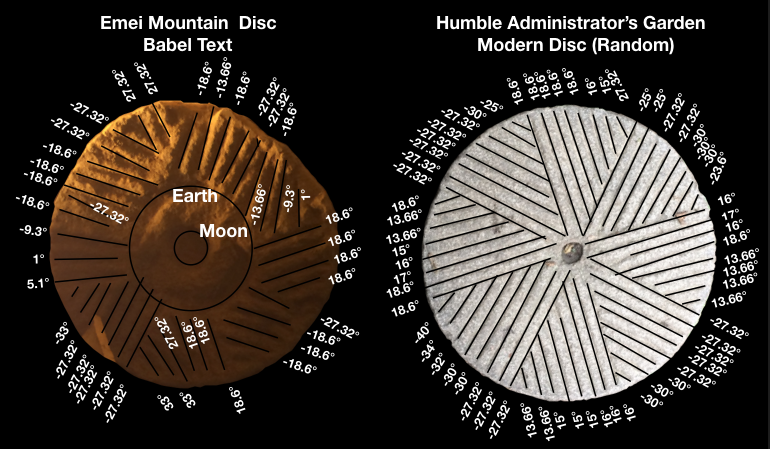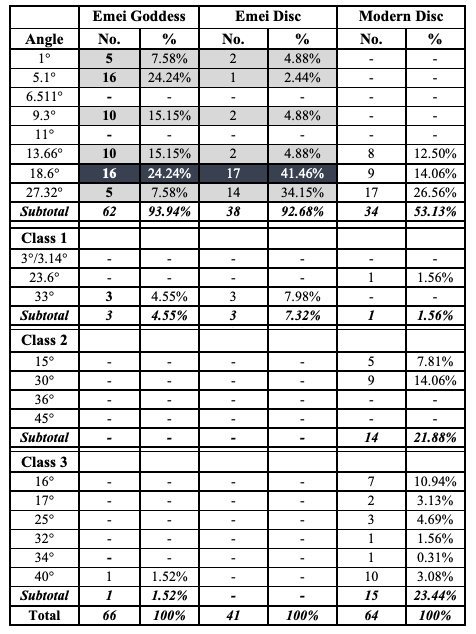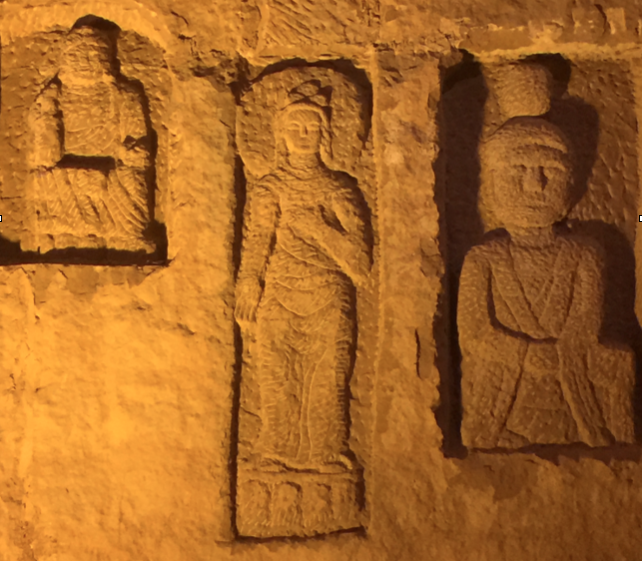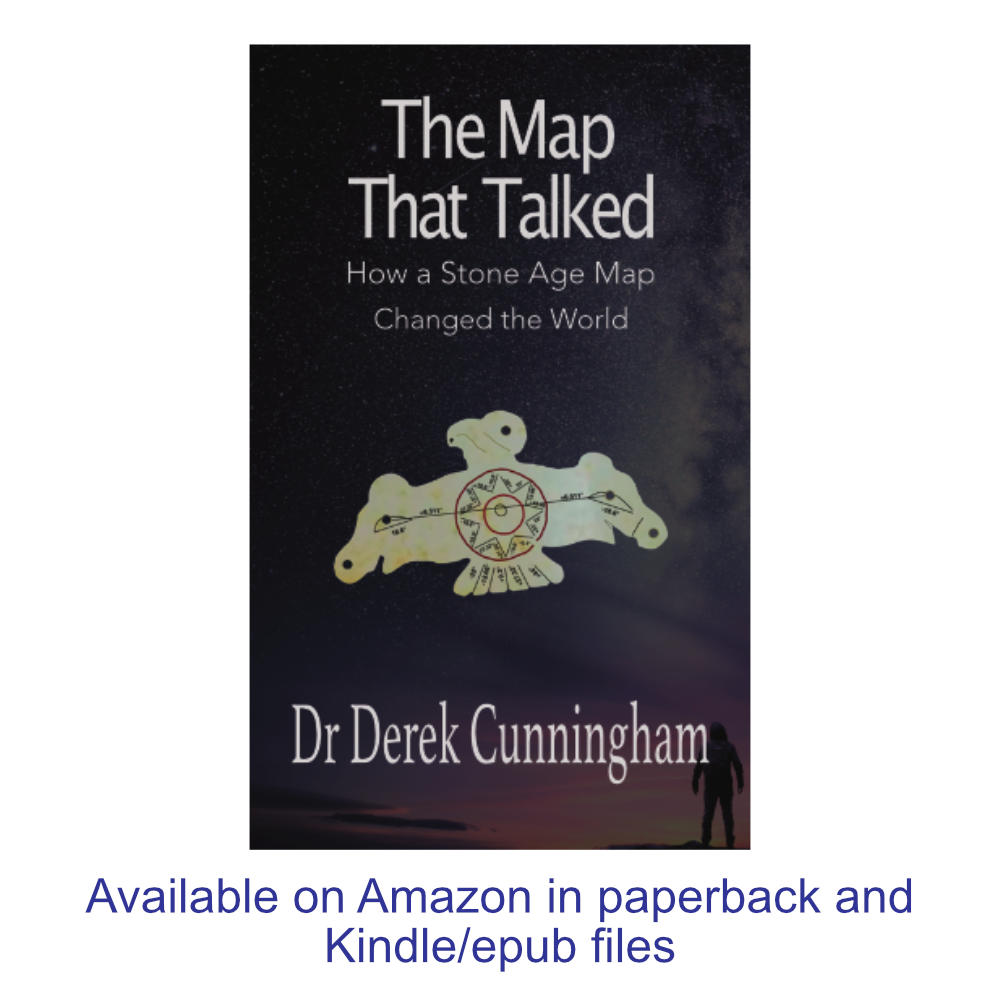I’m now back from what has been a very successful trip to China to Ermei. This is the location that was “marked” in the Map That Talked as the Eastern Gateway to Heaven.
The purpose of my visit was to look at a small archaeological display, which can be found in one of the secondary out-buildings of the Emei Mountain Museum.
Today, the entire Emei Mountain region is a large religious site where worshippers are able to pray at shrines dedicated to Buddhism, Confucianism and Taoism. Unfortunately, and also predictably, all the oldest religious sites at Emei have been rebuilt, and the original structures are almost all destroyed or underground, and inaccessible to the public. However, a tradition of cutting short, angular lines on the stones that are used for paths in the region, and the drawing of long angular lines on temple walls does still remain in this area.
The only location at the Emei site, where some of the older walls and also some early Emei artefacts are visible, is a small temple, which is now part of the Emei Museum. It shows the floor and the walls of what appears to have been an early period alter, and within the small display, in which there are only several artifacts on display, there are three artefacts that exhibit geometric carvings. These three artefacts are; a curved geometrical-type line-pattern that is covered with short lines and dots, a small carved image of a person that appears to be a goddess, who has angular lines drawn down the lower side of her body; and a wheel-shaped stone that is covered in various straight lines. It is interesting to note that numerous modern reproductions of this marked wheeled-shaped stone can be found throughout China.
To test these artefacts for links to astronomy I undertook the same numerical test that was developed as part of my work in analysing the Babel Text, in “The Map that Talked”, and “The Babel Texts”.
Specifically, I looked at the angles that each engraved lines draws (these angles were measured to both the left and right of vertical and to above and below the horizontal) in the images that are either drawn, or carved on the walls or are too large to be moved.
For the artefacts that are “mobile” (in other words, which can be picked up) I normally set the image so the majority of the lines are aligned to the 5.1 degree angle (the angle of the moon’s orbital plane relative to Earth). This is to create a sacrificial value, which can later be removed from the study. After the removal of this value, the primary step of the analysis is to considers only the second to fourth most common angular values, to see if the remaining angles match the astronomical values linked to the measurement of time and the prediction of eclipses. Here the logic is the second to fourth most common values should be entirely random, in a randomly generated array, and they should align to astronomical values, if the geometric pattern is a geometrical code. If the second to fourth angular values are all consistent with the Babel Text, then the 5.1 degree value can be re-introduced to the numerical study.
In the study of the Emei Disc,, I found the next three most common angular values are aligned to astronomical values and in total 38 out of 41 lines are consistent with the primary astronomical series (these being the astronomical values that are linked to the measurement of time and the prediction of eclipses). The 27.32-value represents the sidereal month, and is used by astronomers to measure Earth’s location in its orbit around the sun.
There is also a rotational axis, where the same angular values are observed as offsets from both the horizontal and vertical.
For comparison I also studied a modern engraved stone disc, which was made for tourists. This stone is found in Suzhou, at The Humble Administrator’s Garden 拙政园, which is about one hour from Shanghai. As can be seen, this stone is visually similar to the marked stone disc that is on display at Emei Mountain. The primary differences are the colour, and absence of the central circles, which seem to represent the diameters of the Earth and the moon.
It is also found that for the modern carved disc from the Humble Administrator’s Garden, even after substantial effort was made to align the geometric pattern to astronomical values, a high percentage of the lines do not align to the primary series.


In this case only 53.13% of the lines could be aligned to the primary astronomical series, and 29 out of 64, (which is just under half of the lines studied) are at best Class 2 simple geometrical values, or Class 3 random alignments. Thus only 34 out of 64 of the lines could be aligned to the astronomical values that I have linked in pervious work to The Babel Text. This is below the minimum required for a match to be considered.
This relatively poor match can be compared to the 92.68% value that is obtained from the Emei Mountain disc. In this case 38 out of 41 carved lines are able to align to the proposed theory. In the Emei Mountain disc, the remaining three lines (which are all aligned to 33 degrees) are considered secondary astronomical values.
In the Emei Goddess figure (the second artefact studied) I was obviously was unable to undertake a detailed microscopic study of the engraved lines, to see which were superficial scratch marks, and which were deliberate engravings; but 62 out of 66 lines (these being the short lines carved along the side and front of the goddess) do align to Primary Astronomical Values. This is equivalent to 93.94% of the total. Amongst the four lines that do not align to the primary astronomical series, three align to 33-degrees. This is the same secondary angular value that was seen earlier in the Emei Disk.

So, despite the large stylistic difference, the two geometrical patterns appear identical. Here it should be noted that I had no control over which samples were put on display, by the Emei Museum staff, and the lines on the third sample were too short to be analysed.
As a final note, the analysis of the goddess figure involved looking at multiple photographs, in order to reduce camera lens distortion. Due to space restrictions, I could only show one image here.
So, based on these results there might still remain other examples of the Babel Text at Emei.
And there is one site at Emei that now shouts out to be studied further. The late 4th century Buddhist site called the 10,000 Year Temple (万年寺).
It would be very interesting to know if this circa 1,600 year old Buddhist temple was built upon a much older Stone Age temple.
Clothes can transform your mood and confidence. Fashion moves so quickly that, unless you have a strong point of view, you can lose integrity. I like to be real. I don’t like things to be staged or fussy. I think I’d go mad if I didn’t have a place to escape to. You have to stay true to your heritage, that’s what your brand is about.




